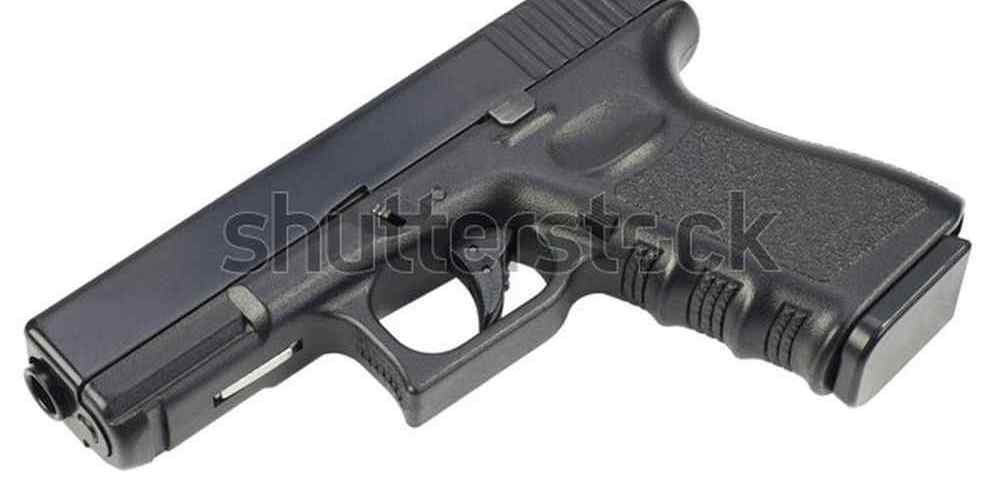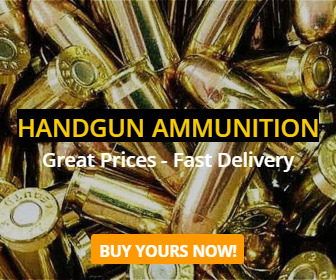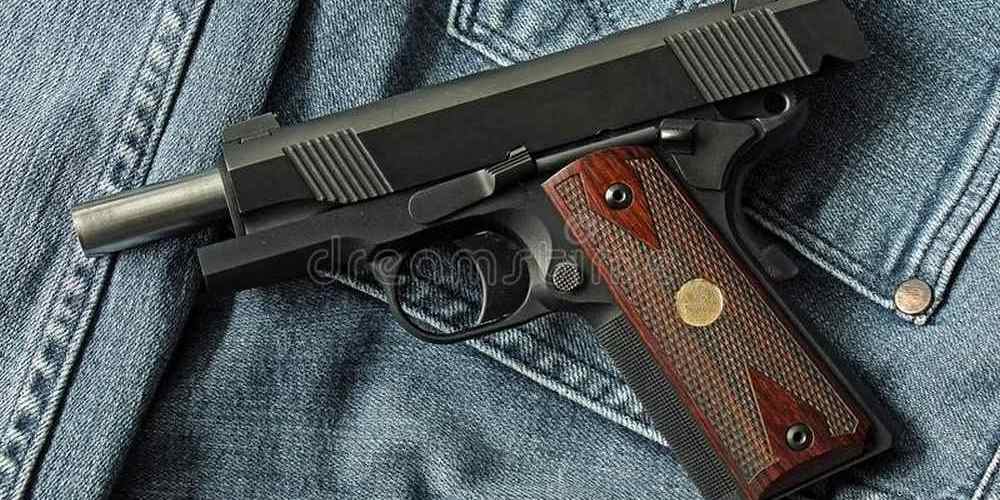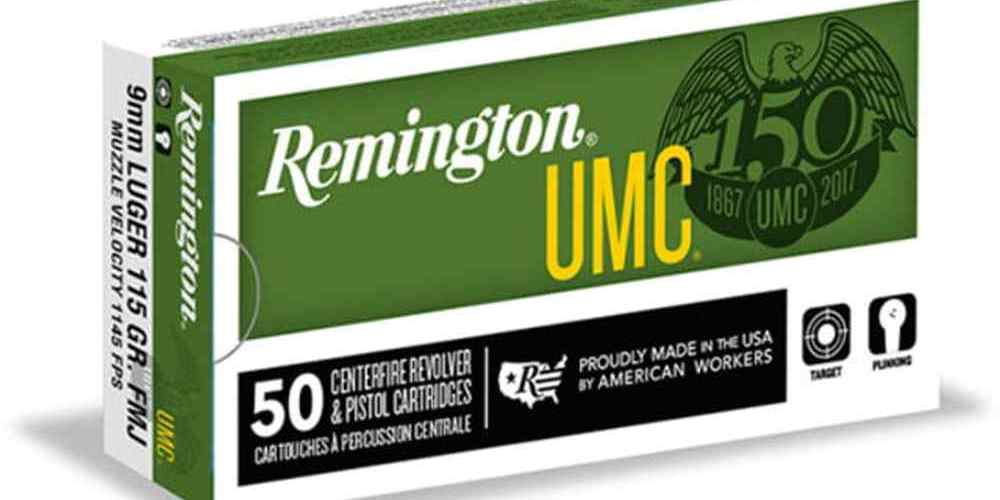“Magnum power in a semi-auto package: the pros and cons of using Magnum rounds in your firearm.”
Increased Stopping Power
When it comes to choosing ammunition for your semi-automatic firearm, one option that often comes up is using magnum rounds. Magnum rounds are known for their increased stopping power compared to standard rounds, making them a popular choice for those looking for added firepower. However, there are both pros and cons to using magnum rounds in semi-auto firearms that should be considered before making a decision.
One of the main advantages of using magnum rounds in a semi-automatic firearm is their increased stopping power. Magnum rounds are typically loaded with more gunpowder than standard rounds, resulting in higher muzzle velocity and energy upon impact. This can be especially beneficial in situations where you need to quickly neutralize a threat, as the increased stopping power of magnum rounds can help ensure a more effective shot placement.
In addition to their increased stopping power, magnum rounds also tend to have better penetration capabilities compared to standard rounds. This can be useful in situations where you may need to shoot through barriers or obstacles to reach your target. The higher velocity and energy of magnum rounds can help them maintain their trajectory and penetrate through various materials more effectively than standard rounds.
However, there are also some drawbacks to using magnum rounds in semi-automatic firearms. One of the main concerns is the increased recoil that comes with firing magnum rounds. The higher muzzle velocity and energy of magnum rounds can result in more felt recoil, which can make it more difficult to maintain accuracy and control over your shots. This can be especially challenging for shooters with less experience or those who are not accustomed to handling the increased recoil of magnum rounds.
Another potential downside to using magnum rounds in semi-automatic firearms is the increased wear and tear on the firearm itself. The higher pressure and energy of magnum rounds can put more stress on the internal components of the firearm, potentially leading to faster wear and a shorter lifespan. This is something to consider if you plan on using magnum rounds frequently, as it may require more frequent maintenance and replacement of parts to keep your firearm in good working condition.
Overall, the decision to use magnum rounds in a semi-automatic firearm comes down to personal preference and intended use. If you prioritize increased stopping power and penetration capabilities, magnum rounds may be a good choice for you. However, it is important to also consider the potential drawbacks such as increased recoil and wear on your firearm. Ultimately, it is important to weigh the pros and cons of using magnum rounds in semi-auto firearms to make an informed decision that best suits your needs and preferences.
Recoil Management
When it comes to choosing ammunition for your semi-automatic firearm, one option that often comes up is using magnum rounds. Magnum rounds are known for their increased power and velocity compared to standard rounds, which can be appealing to some shooters. However, there are also some drawbacks to using magnum rounds in semi-auto firearms that shooters should be aware of.
One of the main advantages of using magnum rounds in a semi-automatic firearm is the increased stopping power they provide. Magnum rounds are typically loaded with more gunpowder, which results in higher muzzle energy and velocity. This can be beneficial in situations where you need to quickly incapacitate a threat, such as in self-defense or hunting scenarios.

Additionally, magnum rounds can be more effective at longer ranges compared to standard rounds. The increased velocity and energy of magnum rounds allow them to maintain their trajectory and energy over longer distances, making them a good choice for shooting at targets that are further away.
However, there are also some downsides to using magnum rounds in semi-auto firearms. One of the main drawbacks is the increased recoil that comes with using magnum rounds. The higher muzzle energy and velocity of magnum rounds result in more felt recoil when the firearm is fired, which can make it more difficult to control and shoot accurately.
The increased recoil of magnum rounds can also lead to slower follow-up shots, as shooters may need more time to reacquire their target after each shot. This can be a significant disadvantage in situations where quick follow-up shots are necessary, such as in competitive shooting or self-defense scenarios.
Another potential downside of using magnum rounds in semi-auto firearms is the increased wear and tear on the firearm itself. The higher pressures generated by magnum rounds can put more stress on the gun’s components, potentially leading to faster wear and a shorter lifespan for the firearm.
In addition, magnum rounds are typically more expensive than standard rounds, which can be a consideration for shooters who are on a budget. The increased cost of magnum rounds can add up quickly, especially for shooters who practice frequently or shoot in high volumes.
Overall, the decision to use magnum rounds in a semi-automatic firearm comes down to personal preference and intended use. Shooters who prioritize stopping power and long-range performance may find magnum rounds to be a good choice, despite the drawbacks of increased recoil and cost.
On the other hand, shooters who value controllability, quick follow-up shots, and cost-effectiveness may prefer to stick with standard rounds. Ultimately, it’s important for shooters to weigh the pros and cons of using magnum rounds in their semi-auto firearms and choose the ammunition that best suits their needs and preferences.
Limited Magazine Capacity
When it comes to semi-automatic firearms, one of the key considerations for many gun owners is the type of ammunition they can use. Magnum rounds are a popular choice for those looking for increased power and performance, but they also come with their own set of pros and cons. In this article, we will explore the impact of using magnum rounds in semi-auto firearms, specifically focusing on the limited magazine capacity that often accompanies these powerful cartridges.
Magnum rounds are known for their increased velocity and stopping power compared to standard ammunition. This makes them a popular choice for hunting and self-defense purposes, as they can deliver a more powerful impact on the target. However, one of the drawbacks of using magnum rounds in semi-auto firearms is the limited magazine capacity.
Most semi-automatic firearms are designed to accommodate standard ammunition, which typically has a smaller cartridge size compared to magnum rounds. As a result, when using magnum rounds, the magazine capacity of the firearm is often reduced. This means that gun owners may have to reload more frequently during shooting sessions, which can be a disadvantage in high-pressure situations where every second counts.
The limited magazine capacity of semi-auto firearms when using magnum rounds can also impact the overall shooting experience. For those who enjoy target shooting or competitive shooting sports, having to reload more frequently can be a hindrance to their performance. It can disrupt the flow of shooting and require additional time and effort to reload the firearm, which can be frustrating for some gun owners.
On the other hand, the limited magazine capacity of semi-auto firearms when using magnum rounds can also be seen as a safety feature. By reducing the number of rounds that can be fired before reloading, it can help prevent accidental discharges and promote responsible gun handling. This can be especially important for novice shooters who may not have as much experience with handling powerful firearms.
In addition, the limited magazine capacity of semi-auto firearms when using magnum rounds can also have legal implications. In some jurisdictions, there are restrictions on the maximum magazine capacity allowed for certain types of firearms. By using magnum rounds with a reduced magazine capacity, gun owners can ensure that they are in compliance with local laws and regulations.
Overall, the limited magazine capacity of semi-auto firearms when using magnum rounds is a trade-off that gun owners must consider. While the increased power and performance of magnum rounds can be appealing, the need to reload more frequently can be a drawback for some shooters. Ultimately, it is important for gun owners to weigh the pros and cons of using magnum rounds in semi-auto firearms and choose the option that best suits their needs and preferences.
Cost of Ammunition
When it comes to choosing ammunition for your semi-automatic firearm, one of the options you may consider is using magnum rounds. Magnum rounds are known for their increased power and velocity compared to standard rounds, making them a popular choice for many gun owners. However, there are both pros and cons to using magnum rounds in semi-auto firearms, and one important factor to consider is the cost of ammunition.
One of the main advantages of using magnum rounds in a semi-automatic firearm is the increased stopping power they provide. Magnum rounds are typically loaded with more gunpowder, which results in higher muzzle velocity and energy upon impact. This can be particularly beneficial in situations where you need to quickly neutralize a threat, such as in self-defense or hunting scenarios.
Additionally, magnum rounds are known for their ability to penetrate barriers more effectively than standard rounds. This can be advantageous in situations where you may need to shoot through obstacles such as car doors or walls. The increased penetration power of magnum rounds can help ensure that your shots reach their intended target, even in challenging conditions.
On the other hand, one of the main drawbacks of using magnum rounds in a semi-automatic firearm is the cost of ammunition. Magnum rounds are typically more expensive than standard rounds, due to the higher amount of gunpowder and materials used in their production. This can make shooting with magnum rounds a costly endeavor, especially if you shoot frequently or in large quantities.
In addition to the upfront cost of purchasing magnum rounds, the cost of ammunition can also add up over time. If you regularly practice shooting with your semi-automatic firearm, you may find yourself spending a significant amount of money on magnum rounds. This can be a deterrent for some gun owners, especially those on a tight budget.
Despite the higher cost of ammunition, many gun owners still choose to use magnum rounds in their semi-automatic firearms due to the benefits they provide in terms of power and performance. If you are considering using magnum rounds in your semi-auto firearm, it is important to weigh the pros and cons carefully and consider your budget and shooting habits.
One way to mitigate the cost of using magnum rounds in a semi-automatic firearm is to shop around for deals and discounts on ammunition. Many gun stores and online retailers offer sales and promotions on magnum rounds, which can help you save money on your ammunition purchases. Additionally, reloading your own ammunition can also be a cost-effective option for gun owners who shoot frequently.
In conclusion, the cost of ammunition is an important factor to consider when deciding whether to use magnum rounds in a semi-automatic firearm. While magnum rounds offer increased power and performance, they can also be more expensive than standard rounds. By carefully weighing the pros and cons of using magnum rounds and exploring cost-saving options, you can make an informed decision that aligns with your budget and shooting needs.
Overpenetration Concerns
When it comes to choosing ammunition for your semi-automatic firearm, there are a variety of options to consider. One popular choice among gun owners is magnum rounds, which offer increased power and velocity compared to standard ammunition. However, there are pros and cons to using magnum rounds in semi-auto firearms, particularly when it comes to overpenetration concerns.
Magnum rounds are known for their high velocity and stopping power, making them a popular choice for self-defense and hunting purposes. The increased power of magnum rounds can help ensure that your shots have the desired impact on your target, whether it be a threat or a game animal. Additionally, the higher velocity of magnum rounds can help improve accuracy and range, making them a versatile option for a variety of shooting scenarios.
However, one of the main concerns with using magnum rounds in semi-auto firearms is the risk of overpenetration. Overpenetration occurs when a bullet passes through its intended target and continues on its trajectory, potentially causing damage to unintended targets or property. This is a serious concern in self-defense situations, where the goal is to stop a threat without causing harm to bystanders or innocent individuals.
To mitigate the risk of overpenetration when using magnum rounds in semi-auto firearms, there are a few strategies that gun owners can employ. One option is to use hollow point or frangible ammunition, which is designed to expand or break apart upon impact, reducing the likelihood of overpenetration. These types of ammunition are specifically engineered to deliver maximum stopping power while minimizing the risk of collateral damage.
Another strategy to reduce the risk of overpenetration is to carefully consider your shooting environment and the potential consequences of a missed shot. When using magnum rounds in semi-auto firearms, it is important to be aware of your surroundings and to take into account the potential for bullets to pass through walls, doors, or other barriers. By practicing good marksmanship and situational awareness, gun owners can help minimize the risk of overpenetration in self-defense scenarios.
Despite the concerns surrounding overpenetration, magnum rounds can still be a valuable option for gun owners who prioritize power and performance in their firearms. The increased velocity and stopping power of magnum rounds can provide a significant advantage in certain shooting situations, particularly when facing larger threats or game animals. By understanding the risks and taking appropriate precautions, gun owners can safely and effectively use magnum rounds in their semi-auto firearms.
In conclusion, magnum rounds offer a range of benefits for gun owners, including increased power and velocity. However, the risk of overpenetration is a valid concern when using magnum rounds in semi-auto firearms. By using appropriate ammunition and practicing good marksmanship, gun owners can mitigate the risk of overpenetration and safely enjoy the advantages of magnum rounds in their firearms. Ultimately, the decision to use magnum rounds should be based on a careful consideration of the potential risks and benefits, as well as the specific needs and preferences of the individual gun owner.








